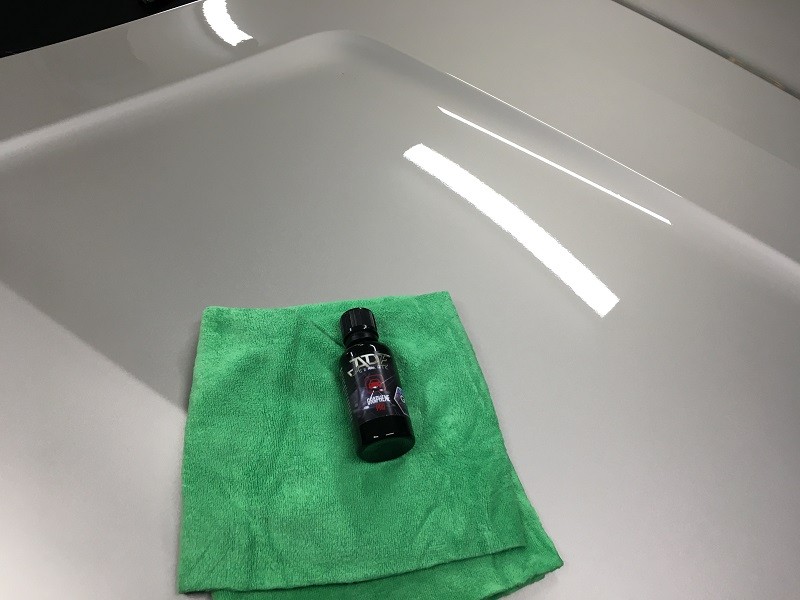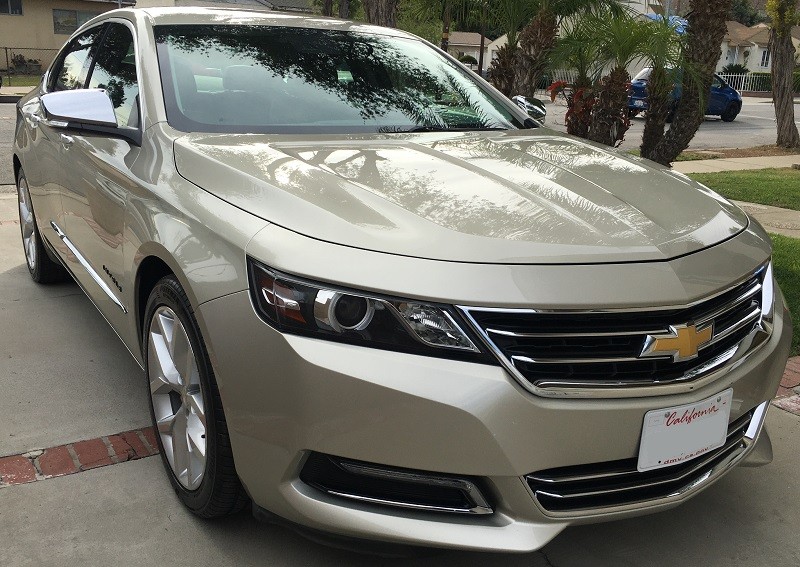I found this information to be extremely helpful and not at all surprising. This is from the "blog" section of the Feynlab website:
At Feynlab, we truly believe we have the best products, and a deeper understanding of chemistry than most of our competitors. Occasionally, a marketing term becomes synonymous with a chemical term, and we get asked when we will release a similar product. It is annoying for us at Feynlab when this happens, as we generally try and stay transparent and realistic about what chemistries we use without giving too much information away. However, it can be difficult for customers to distinguish between true chemistries, and terms that sound good but actually have no scientific backing, or have fundamental scientific flaws in their claims.
What Feynlab coatings are composed of is one of our most frequently asked questions. Inquiries into our chemical’s compositions include: Titanium, Siloxane, Silicon Carbide, Silicon Nitride, Silane, Silica, Graphene, “Ceramic” or “Glass.” The answer is none of our coatings are really based on just one type of chemistry, and the majority of the list above is just marketing buzzwords. We take an integrated approach since all types of chemistry have their advantages and disadvantages. For example, having purely Silane based coatings would limit our chemical scope, which would be an overall disadvantage to our long-term chemical potential. Instead, we start with our base resins, then react them in complementary groups to create a balanced and well-preforming coating that combines elements of the best chemistries.
True chemistry or marketing term?
The best way to answer this question is to go through each term one-by-one.
In general, our argument for many of these “miracle” chemical claims is that if they were true, the inventors would have likely received a Nobel Prize by now. They certainly wouldn’t be hawking this technology in the automotive industry, because there would be far better and more lucrative applications of this technology in other industries if they truly yielded what they claim.
....
GRAPHENE
Graphene is the buzzword of 2020, and we are getting a lot of questions about when we will be releasing the “FEYNLAB GRAPHENE” coating. Unfortunately, we won’t be releasing a Graphene coating for automotive paint. We are seeing a similar trend as with Titanium in 2018. It’s the newest marketing term, and people like new!
At the start of this paper, we claimed to have the best understanding of the chemistry used in the industry today. That claim is not just from theory, we try out and experiment with everything, and that is no different with Graphene. We conducted our initial experiments with Graphene in 2015, along with exploring carbon nano tubes and functionalized nano diamonds. The literature showed great potential, especially for the functionalized types of Graphene that have reactive groups.
First, a short description of how companies are making their Graphene coatings. They take Graphene powdered platelets (graphite powder) and mix it into their normal coatings, and they do not try and mislead people about this. They are open about saying they use Graphene in a Polysiloxane coating for example. It’s exceptionally simple to do, there are no adverse reactions, or difficult chemical techniques. It’s just taking a powder and mixing it into a fully formulated coating. This is not unusual, as there are many additives that are added at the end of the process, and Graphene powdered platelets are an additive.
Now back to our experience with Graphene, we realized a fundamental issue. Graphene is unique because it has a large aspect ratio. This means Graphene powder platelets are wafer thin and wide. If we scaled it up, it would be equivalent in size to the layer of grass on a football field, thin but wide. For it to be considered Graphene, the platelets would have to be about 5 micron in width or few nano-meters high. 5 micron is big, and it’s black in color which means it would be visible. Not only in the bottle, but also on the paint. A coating with a 5 micron particle dispersion on paint would absolutely be visible. To give an idea, 5 micron is typically the average size of the abrasive in most polishing compounds. Additionally, 5 microns is typically thicker than most coatings, so the Graphene platelets would most likely be pulled out during the buffing stage. It can be easy to say, “Why don’t you just reduce the Graphene size to nano-scale, so that it would still be colored in the bottle but invisible on the surface, like with other nano-particles?” That’s where the fundamental issue comes in. That can be done, but it would no longer be Graphene. The aspect ratio would be destroyed, and what is left would be carbon black nano-particles. We use carbon black in our FEYNLAB Plastic Black, and it works great for that application. But it’s obviously not recommend for paint.
We still believe that there is potential for Graphene in coatings, but not in thin film coatings for automotive. Graphene requires a thick layer, around the 100 micron mark, to incorporate it. It’s something we may revisit for architectural or industrial applications.
An objective look at some of the claims about Graphene type coatings will show that they don’t make sense.
1.) Improved heat dissipation results in less water spots. One of the advantages of Graphene is Thermal conductivity. It can transfer heat from end to end exceedingly effectively, so if we use our grass analogy from above, it would be very good at transferring heat from one end of the field to the other. In theory, to make a coating that dissipates heat, presumably away from the car, then all the platelets would have to be perfectly perpendicular to the paint and stick upright, which seems unlikely. These films are also extremely thin. The claim that it would have any substantial affect on the thermal conductivity of any surface seems pretty far fetched. Some companies claim “better heat dissipation” from brake calipers when coated. These same companies do flame tests on their hood showing how insulated it is from heat, meaning no heat transfer to paint, thereby no damage. So which one is it? It can’t be both insulated, and transferable.
2.) Increased hydrophobic abilities. This is most likely untrue, there would be equivalent hydrophobic ability in the products before Graphene powder was added.
3.) Graphene coatings form as single thin layer of graphene on the paint. The below illustration shows a Graphene layer being formed on the paint. Similar images are used by companies to illustrate the effect of their product. Unfortunately, however, you will not get this outcome by simply mixing some graphene powdered platelets into your favorite ceramic coating. In fact if you were able to form a single, uniform layer of graphene on the surfaces you would again be in Nobel Prize territory. The applications of that in the electronics industry would be immeasurable.
Illustration showing single layer of graphene on a surface – stock image
Graphene coatings are pretty much just your average every day Ceramic Coating with a bit of powder mixed in. We think we are going to see a lot more companies enter the market with a “Graphene coating”, especially since it is really simple to mix in some Graphene powder into a coating. Feynlab will stick to what we know, and avoid flashy trends. There is potential for Graphene in thicker film coatings, but it seems like there are other easier to use nano-particles that will deliver better performance in thin film or “Ceramic” coatings.
Summary: Is GRAPHENE a real chemistry or a marketing term?
Graphene is real, but graphene in thin film hand applied coatings is 100% a marketing term.



